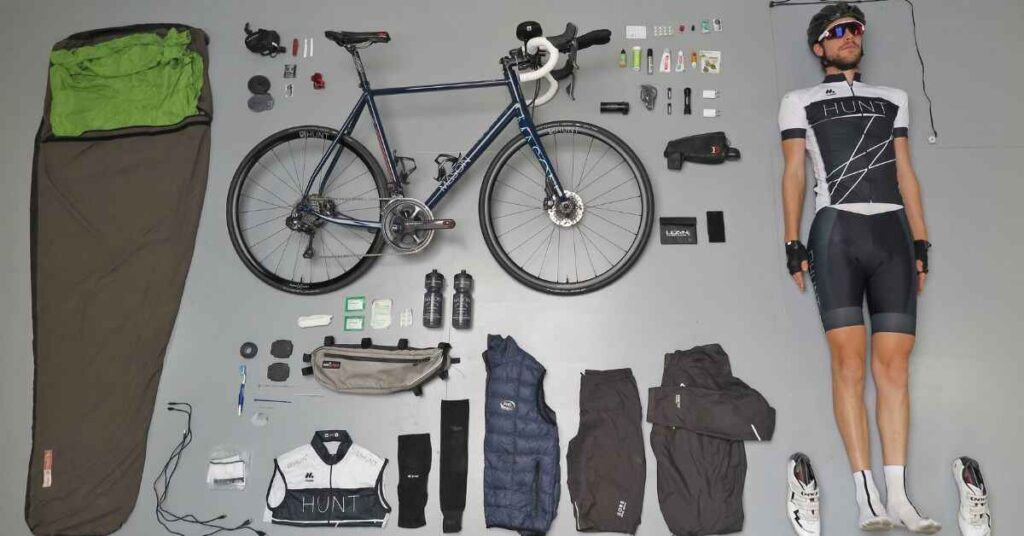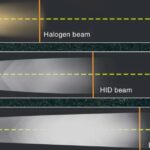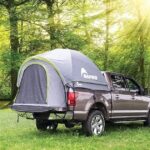Are you considering buying an electric bike but unsure where to start? With the growing popularity of e-bikes, it’s essential to understand the key factors that will influence your decision.
This comprehensive guide covers everything you need to know, from technical specifications to the best time to buy, ensuring you make an informed choice tailored to your needs.
Terms You Need to Know About Electric Bicycles
Motor (Voltage, Current, Wattage)
At the heart of every e-bike lies the motor, which converts electrical energy into mechanical energy to assist with pedaling. Understanding the motor’s specifications is crucial for determining its power output and performance.
Voltage indicates the electric potential and affects the motor’s power. Common e-bike voltages include 24V, 36V, and 48V.
Higher voltage systems, such as 48V, are often found in more robust e-bikes designed for demanding terrains or carrying heavier loads.
Current, measured in amperes, directly impacts the motor’s torque and acceleration. A higher current means more forceful and quicker acceleration, essential for climbing steep hills or starting from a stop.
Wattage, the total power output of the motor, is calculated by multiplying voltage and current. For example, a motor with 36V and 15A would have a wattage of 540W (36V x 15A = 540W).
A higher wattage usually translates to a more powerful motor, but it’s essential to balance wattage with other factors like battery capacity and intended use.
Torque (What is Torque, What Does Torque Mean, How to Calculate Torque)

Torque is a measure of rotational force, crucial for hill climbing and acceleration. It determines how effectively the motor can propel the bike and is measured in Newton meters (Nm).
Torque is calculated using the formula: Torque (Nm) = Force (N) x Radius (m).
For example, a motor with 80Nm of torque will provide robust performance, enabling quick starts from a standstill and smooth climbing on challenging terrains.
Higher torque values are beneficial for riders who encounter hilly terrains or require quick acceleration.
Recommended Post:
How To Adjust Bike Brakes: A Comprehensive Guide For Ensuring Safe Riding
Is it Pedal Assist or Throttle Assist?
E-bikes come with either pedal assist or throttle assist systems, each offering unique advantages.
Pedal assist systems engage the motor based on your pedaling effort, providing a more natural riding experience and helping conserve battery life.
These systems are ideal for long rides, commutes, and fitness activities, as they seamlessly integrate motor power with your pedaling.
On the other hand, throttle assist systems allow you to engage the motor without pedaling, similar to a scooter or motorcycle.
This setup is excellent for riders who need intermittent breaks from pedaling, such as during heavy traffic or when climbing steep hills.
Some e-bikes offer a hybrid approach, combining both pedal and throttle assist, giving riders the flexibility to choose their preferred mode of operation based on the situation.
Different Types of E-bikes

E-bikes come in various types, each designed for specific purposes:
- City/commuter e-bikes are ideal for urban commuting, featuring comfortable seats, lights, and racks.
- Mountain e-bikes (e-MTBs) are built for off-road trails, with robust frames, advanced suspension systems, and aggressive tread tires.
- Folding e-bikes are compact and portable, perfect for commuters who need to carry their bike on public transport.
- Cargo e-bikes are designed for transporting heavy loads, equipped with sturdy frames and large cargo areas.
Choosing the right type of e-bike depends on your intended use, whether it’s daily commuting, off-road adventures, or carrying heavy loads.
E-bike Classification
Class 1 E-bikes
Class 1 e-bikes are pedal-assist only with a maximum speed of 20 mph and no throttle.
They are ideal for beginners and are often allowed on bike paths and trails, making them an excellent choice for leisurely rides and commutes.
Class 2 E-bikes
Class 2 e-bikes offer both pedal assist and throttle with a maximum speed of 20 mph.
This versatile option allows you to adapt to various riding conditions, from steep hills to heavy traffic.
Class 3 E-bikes
Class 3 e-bikes are pedal-assist only, but with a higher maximum speed of 28 mph.
These speedy models are ideal for serious commuters and cyclists who prioritize covering longer distances efficiently.
How Much Do You Need to Spend to Buy a Good E-bike?

The cost of e-bikes varies widely based on features, build quality, and brand.
Entry-Level Ebikes ($500 – $1,000)
Entry-level e-bikes typically offer basic features with limited range and power, suitable for casual riders and short commutes.
These bikes often have lower voltage motors, basic battery systems, and less advanced components.
While they may lack some high-end features, they provide a cost-effective introduction to the world of e-bikes.
Mid-Range Ebikes ($1,000 – $3,000)
Mid-range e-bikes provide enhanced features such as better range, more powerful motors, and higher-quality components.
These bikes are ideal for daily commuters and recreational riders who need a reliable and efficient mode of transportation.
They often come with improved suspension systems, better brakes, and more comfortable seating.
High-End Ebikes ($3,000 and above)
High-end e-bikes boast top-tier features, including long-range batteries, powerful motors, and premium components.
These bikes cater to enthusiasts and professional riders who demand the best in performance and durability.
They are built with the finest materials, ensuring longevity and superior ride quality.
Read More:
How Much Is A Dirt Bike? A Comprehensive 2024 Pricing Guide For Dirt Bike Enthusiasts
When is the Best Time of Year to Buy an E-bike?
Timing your e-bike purchase can save you money. Here are the best times to buy:
End of Season Sales
End-of-season sales typically occur in late summer or early fall when retailers clear out inventory to make room for new models.
During this time, you can find significant discounts on current-year models, making it an excellent opportunity to buy a high-quality e-bike at a reduced price.
Holiday Sales
Holiday sales, such as Black Friday, Cyber Monday, and other major holidays, feature special promotions and discounts.
Retailers offer competitive pricing and bundled deals, providing a great chance to purchase an e-bike at a lower cost.
New Model Releases
New model releases, often in early spring or when new models are announced, prompt retailers to offer discounts on previous models.
This results in decent discounts on last year’s models, which still offer excellent performance and features.
What Kind of Electric Bike Accessories Do I Need?

Enhancing your e-bike experience involves investing in essential accessories. Here are some must-haves:
Helmets
Safety should always be a priority, and a good helmet is crucial for protection. Look for helmets specifically designed for e-bike use with enhanced impact resistance and features like built-in visors, ventilation systems, and adjustable fit systems.
Lights
Visibility is essential for safe riding, especially during night riding and low-light conditions.
Investing in bright, rechargeable front and rear lights with multiple settings, including flashing modes, will significantly improve your visibility and safety.
Locks
Protecting your investment is crucial, and a sturdy lock is a must-have accessory.
Options like U-locks, chain locks, and folding locks offer varying degrees of security. Choose a lock that matches your security needs and the level of risk in your area.
Storage Solutions

Convenience is key, and having the right storage solutions can enhance your e-bike experience.
Panniers, baskets, and racks provide practical options for carrying belongings. Look for waterproof and detachable options for added versatility.
Mirrors
Enhancing your safety with rear-view mirrors can provide better visibility of traffic behind you.
Handlebar-mounted or helmet-mounted mirrors offer different levels of convenience and visibility, allowing you to stay aware of your surroundings without turning your head.
Phone Mounts
Keeping your phone secure and accessible is important for navigation and staying connected.
Adjustable and shock-absorbing phone mounts ensure your device stays in place during your ride, providing easy access to navigation apps and calls.
Final Thoughts
Purpose: Determine your primary use—commuting, leisure, off-road, or long-distance.
Motor Power: Choose between 250W, 500W, or 750W motors based on terrain and speed needs.
Battery Range: Consider the battery’s range; typical ranges are 20-100 miles per charge.
Type: Select from city, mountain, folding, or cargo e-bikes.
Legal Regulations: Check local laws regarding speed limits and where e-bikes are allowed.
Weight: Consider the bike’s weight for transport and storage.
Cost: Prices vary widely, typically between $1,000 to $5,000.
Maintenance: Plan for regular maintenance, especially for the battery and motor.
Test Ride: Always test ride before purchasing to ensure comfort and performance.
Warranty: Look for a good warranty to cover potential issues.
Frequently Asked Questions
Can you use an electric bike on the beach?
Yes, you can use an electric bike on the beach, but check local regulations and ensure your bike is suitable for sand.
Is it OK to ride a bike on the beach?
Yes, riding a bike on the beach is generally allowed, but be mindful of beach rules and conditions.
How to clean an e-bike after a beach?
Rinse off sand and salt with fresh water, dry thoroughly, and lubricate the chain and other moving parts.
Can you coast on an electric bike?
Yes, you can coast on an electric bike, just like a regular bike.
Can water damage electric bikes?
Yes, water can damage electric bikes, especially the electrical components, so avoid submerging them and dry them thoroughly after exposure to moisture.







